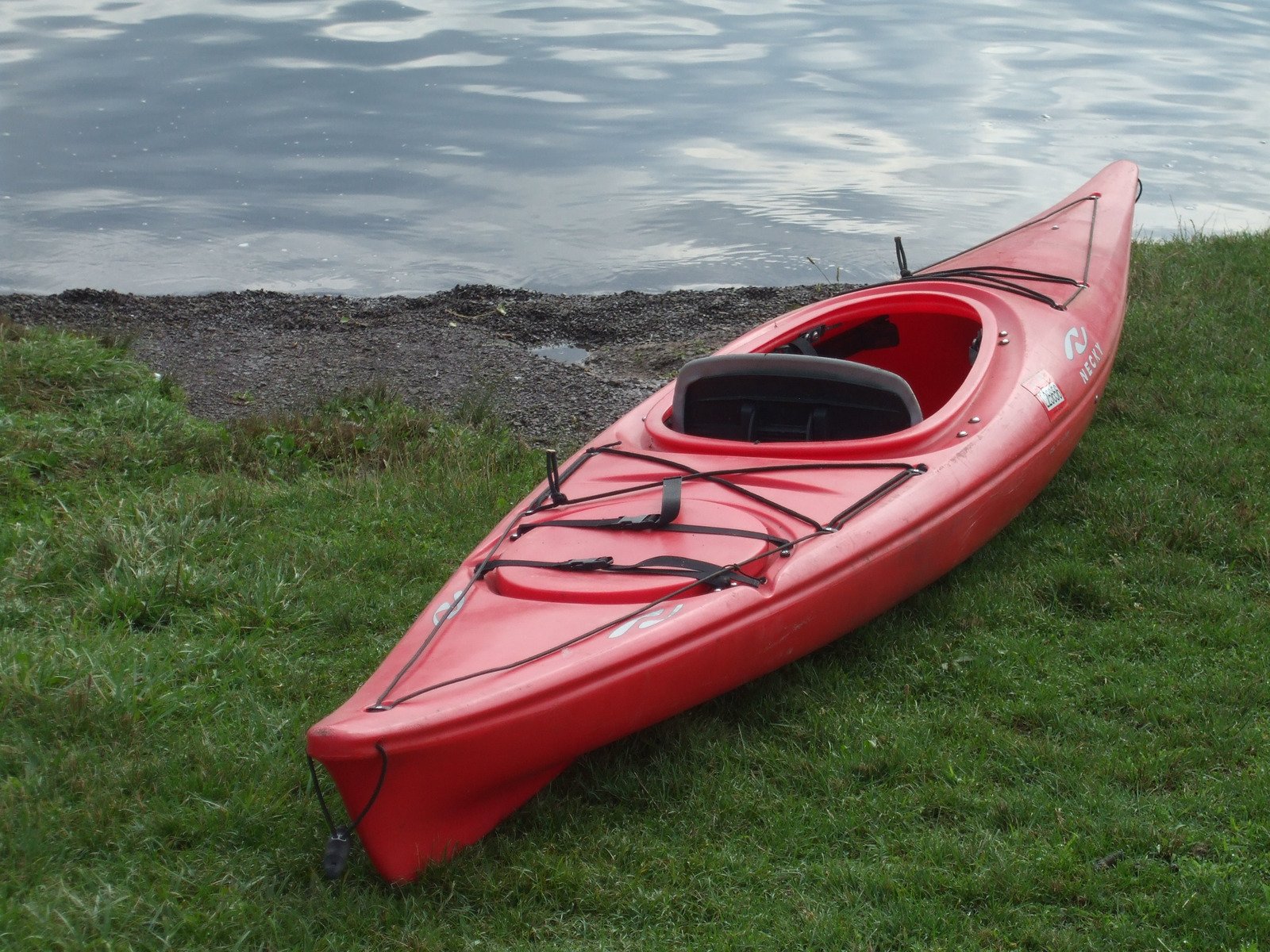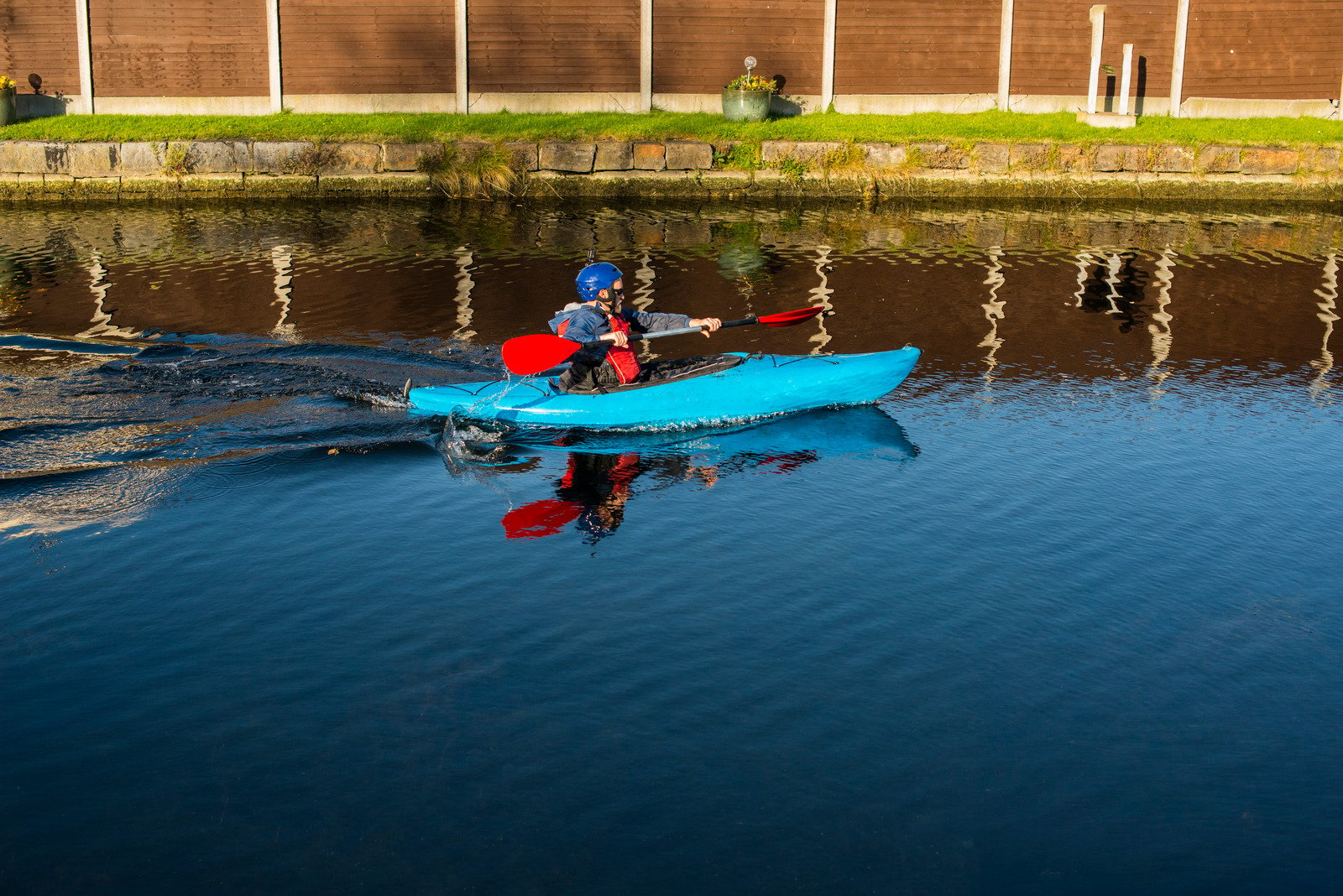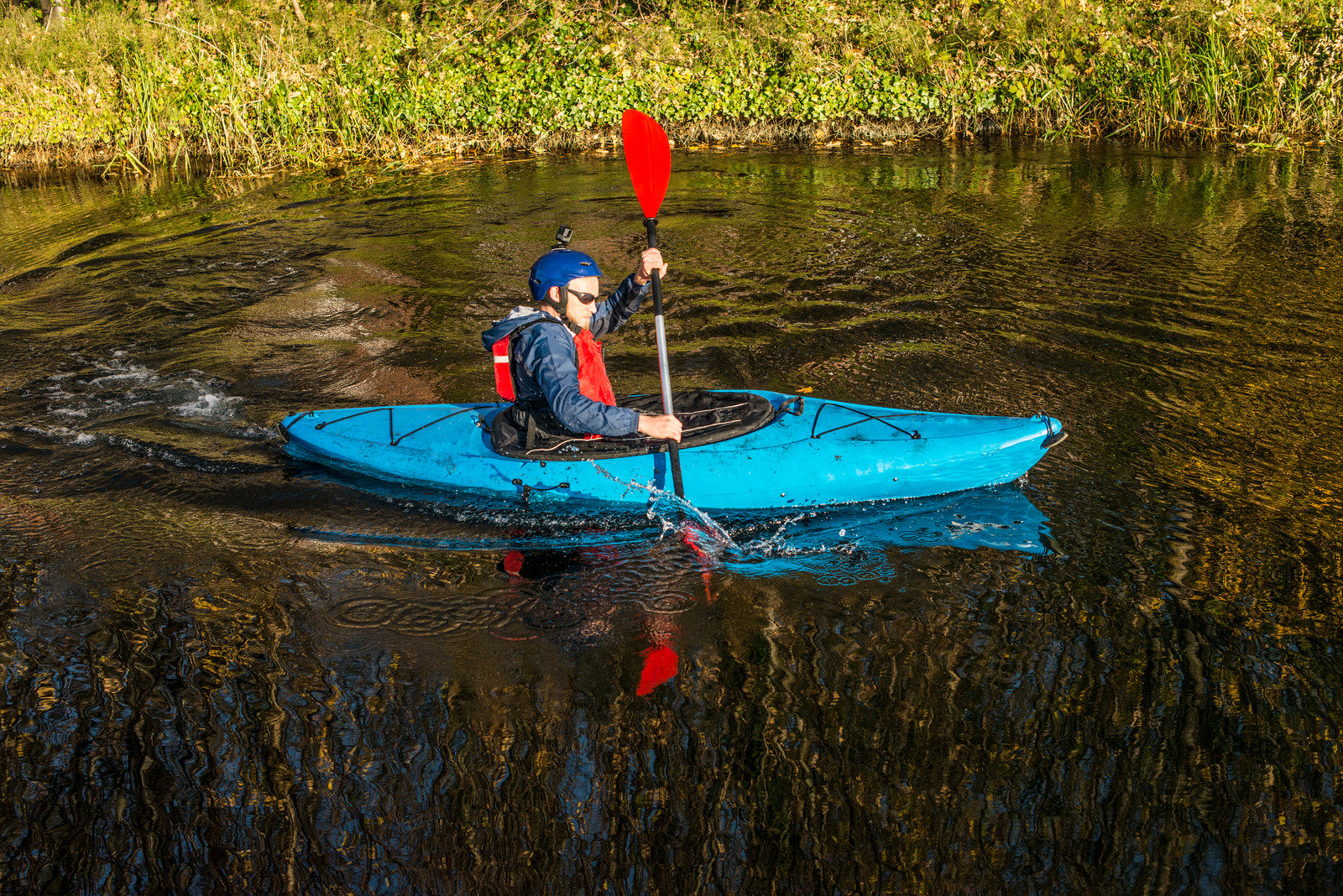Kayak Steering 101: Techniques and Tips for Effective Control
Greetings, adventure seekers! Gather ’round and listen up! We’re about to embark on a wild journey into the captivating world of kayak steering. The emerald waters of Ireland beckon, and you find yourself ready to conquer the waves with your trusty kayak. But hold your horses, or rather, your paddles! Before we dive in, let’s uncover the top questions from kayakers “how to steer a kayak?” We will give essential tips that will have you mastering the art of kayak steering like a true seafaring legend. So, buckle up (or rather, buckle in your lifejacket) and let’s get paddlin’!
The Basics of Kayak Steering
Understanding the Anatomy of a Kayak

Have you ever wondered what makes a kayak tick? Well, let’s break it down. Think of your kayak as a pint of Guinness – sleek, sturdy, and ready for adventure. Get acquainted with its different parts:
Bow
The front part of the kayak that cuts through the water like a brave ship.
Stern
The rear part of the kayak that helps with stability and directional control.
Hull
The body of the kayak, which can be flat, rounded, or a combination of both, affecting its stability and maneuverability.
Cockpit
The seating area where you’ll find yourself comfortably seated, ready to conquer the waters.
Proper Posture and Paddling Technique
Now, listen up, lads and lasses, because this is where the magic happens. Sit up straight, channel your inner leprechaun, and hold that paddle like it’s a pot of gold. We’ll show you the proper paddling technique that’ll make your kayak glide through the water like a graceful swan on the River Shannon:
Sit Up Straight
Imagine a proud Irishman with his head held high. Sit with good posture, engaging your core, and keeping your back straight.
Hold the Paddle with a Firm Grip
Treat the paddle like a pint glass – hold it firmly, but not too tight, allowing for controlled strokes.
Shoulder Rotation
Engage your upper body by rotating your shoulders with each stroke, distributing the effort and maximizing power.
Maintaining Balance and Stability on the Water
Balancing on a kayak is a bit like staying upright after a few pints at the local pub – it requires finesse, a steady hand, and perhaps a touch of luck. We’ll teach you the tricks to keep your kayak steady and prevent any unwanted unplanned dips into the water:
Find Your Center of Gravity
Like balancing on a shaky bridge, find the sweet spot where your weight is evenly distributed in the kayak.
Brace Yourself
Use your knees and thighs to brace against the kayak’s sides, providing stability and preventing unnecessary wobbling.
Relax and Go with the Flow
Don’t tense up like a stubborn sheep – allow your body to move naturally with the kayak as it responds to the water’s movement.
Essential Skills for Kayak Steering

Ready to make waves? Master the forward stroke, a powerful move that propels your kayak forward with the grace of a Celtic warrior charging into battle. But hey, don’t forget about the reverse stroke! It’s like hitting the brakes, ensuring you have full control over your kayak’s backward maneuvers.
Forward Stroke
The bread and butter of kayak propulsion. Use a sweeping motion, planting the blade of the paddle in the water near your feet and pulling it backward, powering your kayak forward.
Reverse Stroke
The handy maneuver that allows you to move backward. Perform the opposite motion of the forward stroke, pushing the paddle away from your kayak and towards the stern.
Draw Strokes for Precision Maneuvering
Forward Draw Stroke
This stroke helps you move your kayak sideways without changing your heading. Plant the blade of the paddle near the kayak’s bow and pull it towards the side, perpendicular to the kayak. The water’s resistance will pull your kayak sideways.
Reverse Draw Stroke
Similar to the forward draw stroke, but executed in reverse. Plant the blade near the kayak’s stern and pull it towards the side, creating a sideways movement.
Sweep Strokes for Turning
Ah, the art of turning a kayak! Think of it as a graceful dance move on water – the kayak glides effortlessly, making those turns like a Riverdance superstar. We’ll teach you the sweep stroke, a gentle swish of the paddle that’ll have you twirling your kayak in no time.
Forward Sweep Stroke
This is your go-to stroke for making graceful turns. Begin by planting the paddle blade in the water near your toes on the side you want to turn. As if tracing a wide rainbow in the water, sweep the paddle blade in an arc away from the kayak, curving towards the stern. This sweeping motion generates a turning force, allowing your kayak to gracefully change direction.
Reverse Sweep Stroke
Sometimes, you need to pull off a quick, nimble turn to avoid an obstacle or catch a glimpse of an elusive seal. The reverse sweep stroke comes to the rescue! Plant the paddle blade near your hips on the side opposite to the direction you want to turn. With a swift and snappy motion, sweep the paddle blade outwards in a reverse arc, bending towards the bow. This reverse sweep creates a rapid turning force, allowing you to execute agile maneuvers with finesse.
Combination Sweeps
To unleash the full potential of your turning prowess, master the art of combining sweep strokes. Experiment with alternating forward and reverse sweeps on either side of the kayak to execute tight, controlled turns. Picture it as an intricate dance routine, where each sweep stroke becomes a step in perfect harmony.
Adjusting Stroke Intensity
Like a true poet playing with words, vary the intensity and length of your sweep strokes to achieve different turning radii. For broader turns, use wider, more extended sweeps. For sharper turns, employ shorter, snappier sweeps that create a tighter turning radius. Adjusting the stroke intensity allows you to navigate the waters with the precision of a fiddle player hitting the perfect note.
Practicing Balance
Remember, while executing sweep strokes, maintaining balance is key. Embrace your inner river nymph and lean your upper body slightly towards the side of the sweep stroke to counterbalance the force and maintain stability. This subtle weight shift keeps your kayak in harmony with the water, ensuring a seamless turning experience.
Edging and Tilt Control
Now, here’s where things get cheeky! Edging is like giving your kayak a playful wink, tilting it just enough to maintain your balance and turn on a dime. It’s a move that says, “I’m in control, and this kayak dances to my tune!” Master the art of edging, and you’ll be the envy of every fellow adventurer:
Edging
Think of edging as your secret weapon for maneuvering through the waters like a seasoned kayaking maestro. By tilting your kayak on its edge, you enhance its responsiveness and agility. To edge your kayak effectively:
- Shift your weight slightly to one side, leaning your upper body towards that side.
- Use your knees and thighs to brace against the kayak’s thigh braces or the sides of the cockpit.
- Maintain a balanced and controlled posture, engaging your core muscles for stability.
Tilt Control
Just like an Irish dancer maintains poise and balance during an intricate step, mastering tilt control in your kayak is essential for stability and control. Here’s how to refine your tilt control skills:
- Start with gentle adjustments: Gradually tilt your kayak by shifting your weight and experimenting with different angles.
- Find the sweet spot: Discover the point where your kayak is comfortably tilted without feeling unstable. It may take some practice to find the right balance.
- Adapt to changing conditions: Adjust your tilt based on the water conditions, such as waves or currents, to maintain stability and control.
Advanced Edging Techniques
Once you’ve mastered the basics of edging and tilt control, you can take it up a notch with these advanced techniques:
High Edge
Increase the angle of your kayak’s tilt by leaning your upper body farther towards the edge. This allows for sharper turns and increased maneuverability.
Low Edge
Decrease the angle of your kayak’s tilt by bringing your upper body more upright. This provides stability and better tracking in straight lines.
Dynamic Edging
Combine edging with your paddle strokes to enhance maneuverability. For example, while performing a forward sweep stroke, edge your kayak towards the same side to turn more efficiently.
Adjusting Paddle Angle and Placement
Ah, the subtleties of paddle angles and placements! It’s like seasoning your favorite stew – a pinch of this, a dash of that, and voila! We’ll guide you through the art of adjusting your paddle’s angle and placement to maximize your steering power. The waters will be your playground!
Paddle Angle for Forward Strokes
- The angle of your paddle plays a crucial role in the efficiency and power of your forward strokes.
- For optimal performance, angle the paddle blade slightly away from you as you plant it in the water.
- The angle helps to catch and pull the water effectively, propelling your kayak forward with each stroke.
- Experiment with different angles to find the sweet spot that maximizes your propulsion and minimizes resistance.
Paddle Angle for Turning Strokes
- Adjusting the paddle angle is equally important when executing turning strokes, such as sweep strokes.
- For forward sweep strokes, start with the paddle blade angled slightly toward the bow of the kayak.
- As you sweep the paddle out to the side, gradually adjust the angle to cut through the water and create a turning force.
- Finding the right balance between a shallow angle and one that provides enough resistance is key to executing precise turns.
Placement for Maximum Leverage
- The placement of your paddle in the water affects your ability to generate power and control the kayak’s direction.
- For forward strokes, aim to immerse the entire blade fully into the water, burying it up to the shaft.
- Placing the paddle closer to the kayak’s centerline ensures that your strokes are efficient and provide maximum leverage.
- Avoid “digging” the paddle too far behind you or too far ahead, as it can compromise your balance and disrupt your kayak’s trajectory.
Adjusting Placement for Turning Maneuvers
- During turning maneuvers, such as sweep strokes, adjust the placement of your paddle according to the intended direction.
- For forward sweep strokes, start with the paddle blade positioned near the kayak’s bow on the side you wish to turn.
- As you sweep the paddle out and away from the kayak, ensure the blade remains immersed and angled appropriately.
- Proper placement, combined with the right angle, enables you to harness the water’s resistance and execute smooth, controlled turns.
Fine-tuning for Individual Preference
- Keep in mind that paddle angle and placement may vary slightly depending on personal preference and the kayak’s design.
- Experimentation and practice are essential to find the paddle angle and placement that feel most comfortable and effective for you.
- Pay attention to your kayak’s responsiveness and how your strokes influence its movement, making small adjustments as needed.
Utilizing Body Rotation for Enhanced Steering

Kayaking is not just an arm workout; it’s a full-body experience. Imagine yourself as a Celtic warrior, harnessing the power of your entire body to steer your trusty vessel. We’ll show you how to engage your core, twist your torso, and command your kayak.
Engaging Core Muscles
- Effective kayak steering involves more than just arm movements. Engage your core muscles to enhance your steering power and control.
- Initiate each stroke by rotating your torso, allowing your upper body to drive the movement while your arms follow.
- By utilizing your core muscles, you generate more power and stability, resulting in efficient and controlled steering.
Torso Rotation in Forward Strokes
- When performing forward strokes, maximize your power by incorporating torso rotation.
- As you reach forward to plant the paddle in the water, rotate your torso towards the side of the stroke.
- This rotation generates a twisting motion that engages your core muscles and adds power to each stroke.
- The combined effort of your arms and torso rotation propels your kayak forward with increased efficiency.
Torso Rotation in Turning Strokes
- Torso rotation is equally important for executing turning strokes, such as sweep strokes.
- As you initiate a forward sweep stroke, rotate your torso towards the side of the turn.
- By engaging your core and rotating your upper body, you enhance the effectiveness of the stroke and the turning force generated.
- The coordination between torso rotation and paddle technique allows for smoother and more controlled turns.
Maintaining Balance and Stability
- While utilizing torso rotation, it’s crucial to maintain balance and stability in your kayak.
- As you rotate your torso, remember to engage your lower body and maintain a stable base.
- Use your knees and thigh braces to brace against the kayak, providing stability and preventing unnecessary rocking or instability.
- The combination of torso rotation, engaged core muscles, and a stable lower body ensures a harmonious and controlled kayak steering experience.
Practice and Refinement
- Body rotation is a skill that improves with practice and awareness.
- Start by focusing on incorporating gentle torso rotation into your paddling technique during your practice sessions.
- Gradually increase the range and intensity of your rotation, finding a comfortable balance that works for you.
- Regular practice and mindful refinement of your body rotation technique will lead to smoother and more efficient kayak steering.
Using Rudder Systems and Skegs for Assistance
In the world of kayaking, rudder systems and skegs are like lucky charms that give you that extra bit of assistance when needed. Let’s explore how these features can help you navigate the waters:
Rudder Systems: Your Sailing Companion
- A rudder system consists of a blade mounted on the stern of your kayak, ready to be your loyal companion in steering.
- When faced with challenging conditions, such as strong winds or currents, engaging the rudder system can provide added control and stability.
- To deploy the rudder, simply lower it into the water by pulling the control lines or operating the foot pedals, depending on the design of your kayak.
- Once the rudder is in the water, use the foot pedals to adjust its angle, allowing you to steer effortlessly by applying pressure with your feet.
Skegs: A Subtle Nudge for Tracking
- Unlike rudder systems, skegs are not designed for steering but rather for enhancing your kayak’s tracking ability.
- A skeg is a retractable fin mounted on the keel of the kayak, typically located towards the rear.
- When deployed, the skeg extends into the water, providing a subtle nudge of resistance against the sideways forces, helping your kayak maintain a straight course.
- This trickster keeps your kayak on track, preventing it from wandering off course when faced with crosswinds or currents.
- Deploying or retracting the skeg is usually done through a control mechanism conveniently located within reach of your seat.
Choosing the Right System for You
- When it comes to rudder systems and skegs, it’s essential to choose the option that suits your kayaking style and the conditions you’re likely to encounter.
- Rudder systems are more beneficial in situations where precise maneuverability and quick turning are necessary, making them popular in rough waters or when tackling intricate waterways.
- On the other hand, skegs are ideal for longer paddling trips or when navigating open waters with varying wind conditions, providing stability and enhanced tracking capabilities.
- Consider your kayaking goals, the environments you’ll be exploring, and your personal preferences to determine which system will be your trusted companion on your aquatic adventures.
Embark on a Kayaking Adventure with us!
There you have it, adventurers! Armed with these essential tips, you’re now equipped to conquer the waters with your newfound kayak steering prowess. But hold on, for a truly unforgettable experience lies just a step away. It’s time to reach out to us and secure your much-anticipated kayaking adventure with the lads!
Ready to plan your stag party adventure? Whether you are planning a stag party in Carrick on Shannon, Kilkenny, or Galway this guide is truly an angel that will give your lads a craic that you can never forget.

 WHICH STAG PARTY SUITS YOUR STAG’S PERSONALITY BEST?
WHICH STAG PARTY SUITS YOUR STAG’S PERSONALITY BEST?